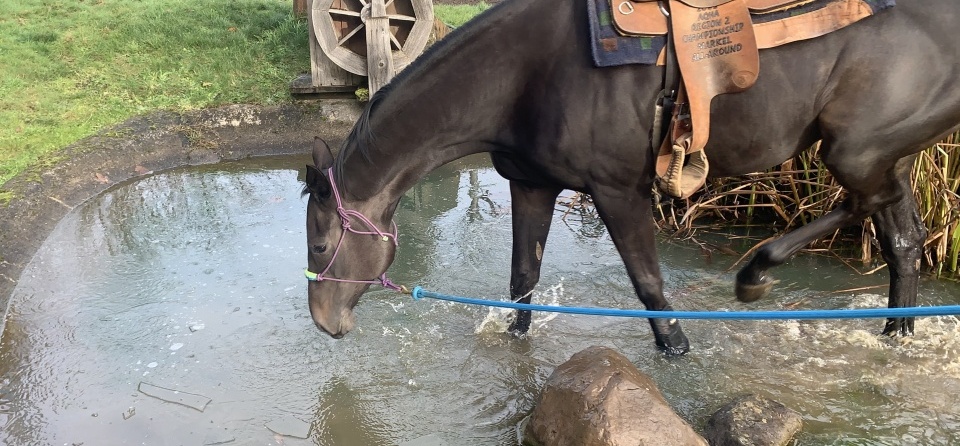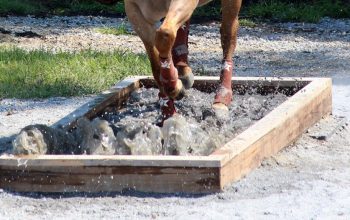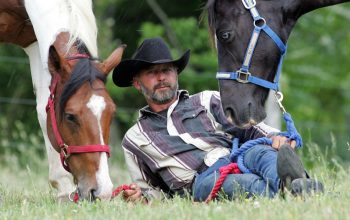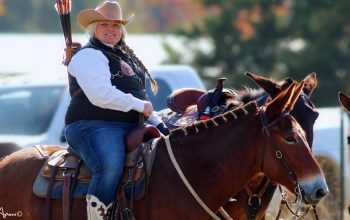
By Mark Bolender
While trail riding in the winter, early spring and or late fall one expects to find ice on the puddles. The crackling noise often catches riders and horses by surprise when it is stepped upon putting the rider at risk of being dismounted when the horse reacts to the noise. To prevent this potential dangerous situation you must prepare the horse for it before you hit the trail.
The following method of preparing the horse to break ice has been used successfully at Bolender Horse Park.
Make sure that your Bolender Bubble is well established for the safety of the horse and trainer. If the bubble has not been established the horse will want to bolt when it first steps into the ice and water putting it in danger and the trainer. The horse must have no doubt in its mind that you are the leader for they will try harder to please and it will calm them for they know instinctively that a leader will protect them at all cost.
The first step is to find a puddle or pond with at least ¼ inch of ice on it. Make sure that you have wraps on the front legs. I have never had an injury or a cut but I am always concerned so I error on the safe sides with wraps.
If you do not want to wait for the weather then freeze a number of sheets of ice in your freezer. You will need a bunch. Set them upon crushed ice so they will make a little more noise when stepped upon.

Next start from the ground and drive the horse to the water with ice on it (make sure that your driving game is well established). Allow the horse to examine the ice and test it. More than likely the horse will draw back when it first steps on it and a noise is made. Allow the horse to move but hold your position and do not move your feet. Ask for the horse to again examine the ice and then to step into the water. Do not force the horse but be insistent that the horse move forward. The horse may step back out of the water several times which is normal. Simply insist that the horse give it another try. Your attitude should be “this is what you can do” not “this is what you will do”. It sounds like a small difference but it is a major difference for the horse will pick up both attitudes in a heartbeat.
Your role at this point is that of a teacher who inspires the horse to try and not one who tries to dominate. By remaining focused and calm your horse will stay focused and calm as can be seen by these photos of this Arabian learning to break ice. Assuming that you have established a leadership role and triggered an instinctual response to please, the horse will continue to try if you stay focused and quite. Be patient and allow the horse to think it through. Your patients will be rewarded with the horse taking another step into the water while breaking the ice one step at a time.
 Learn more about IMTCA and Mark Bolender, IMTCA Founder, at imtca.org
Learn more about IMTCA and Mark Bolender, IMTCA Founder, at imtca.org





